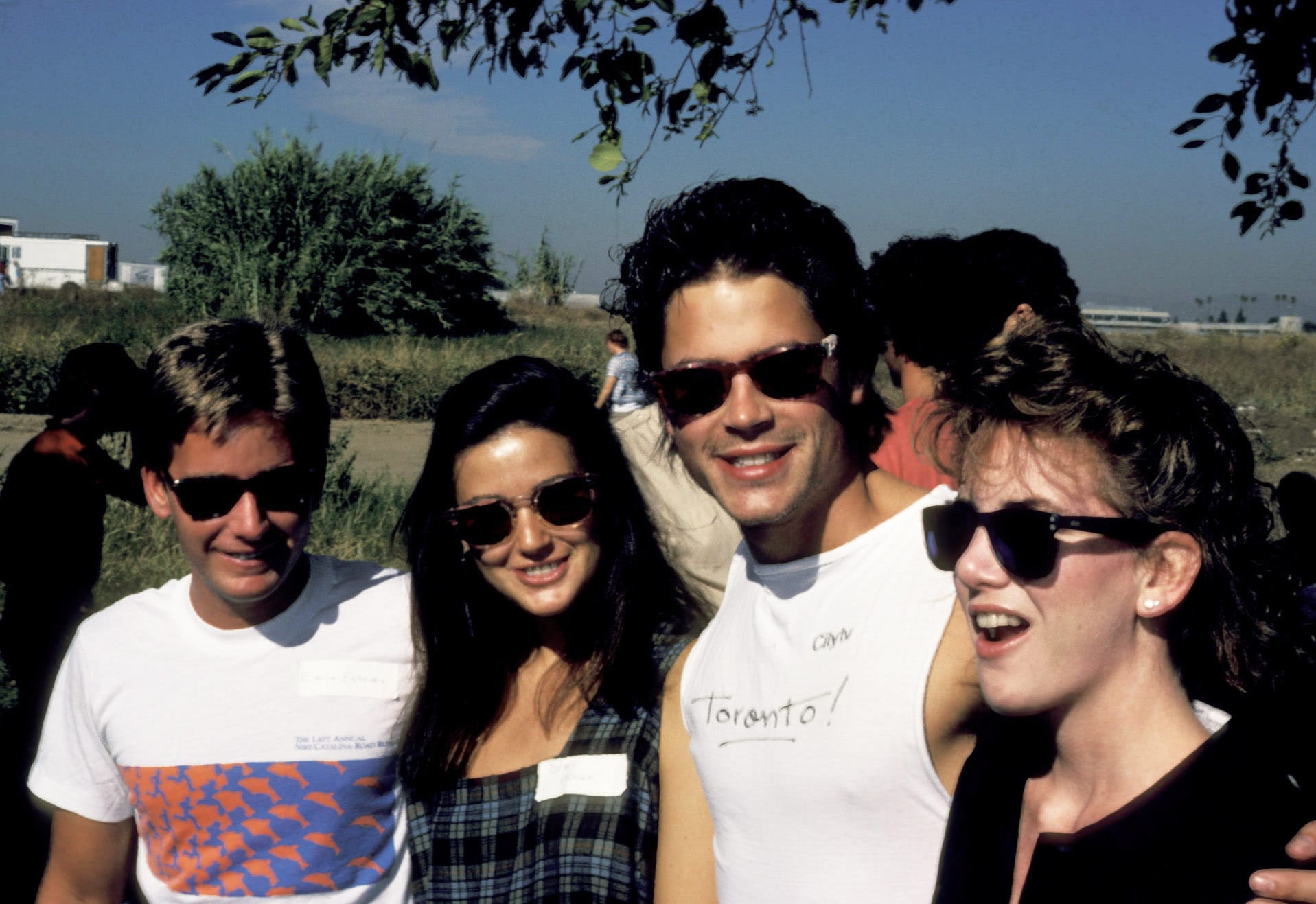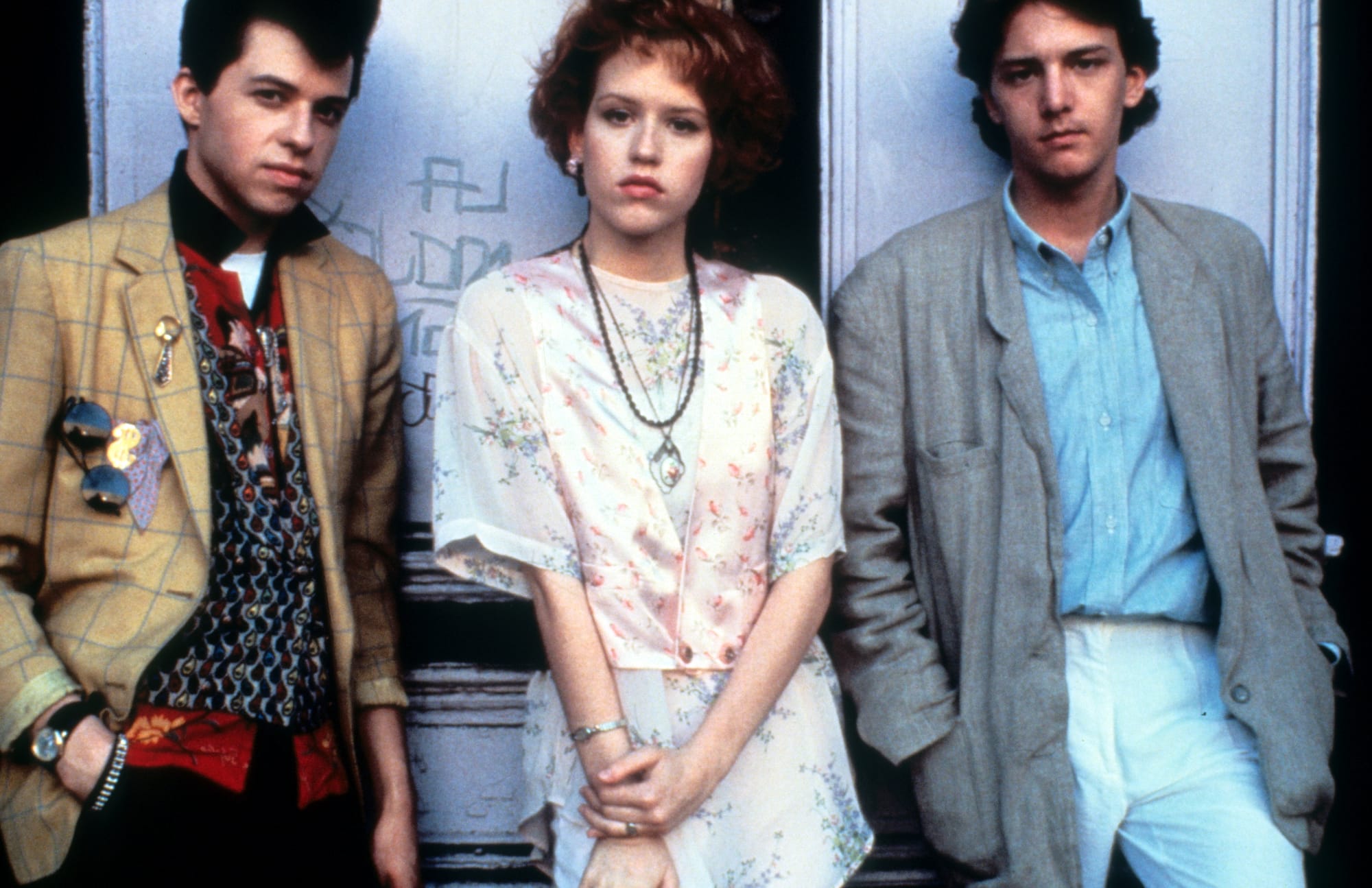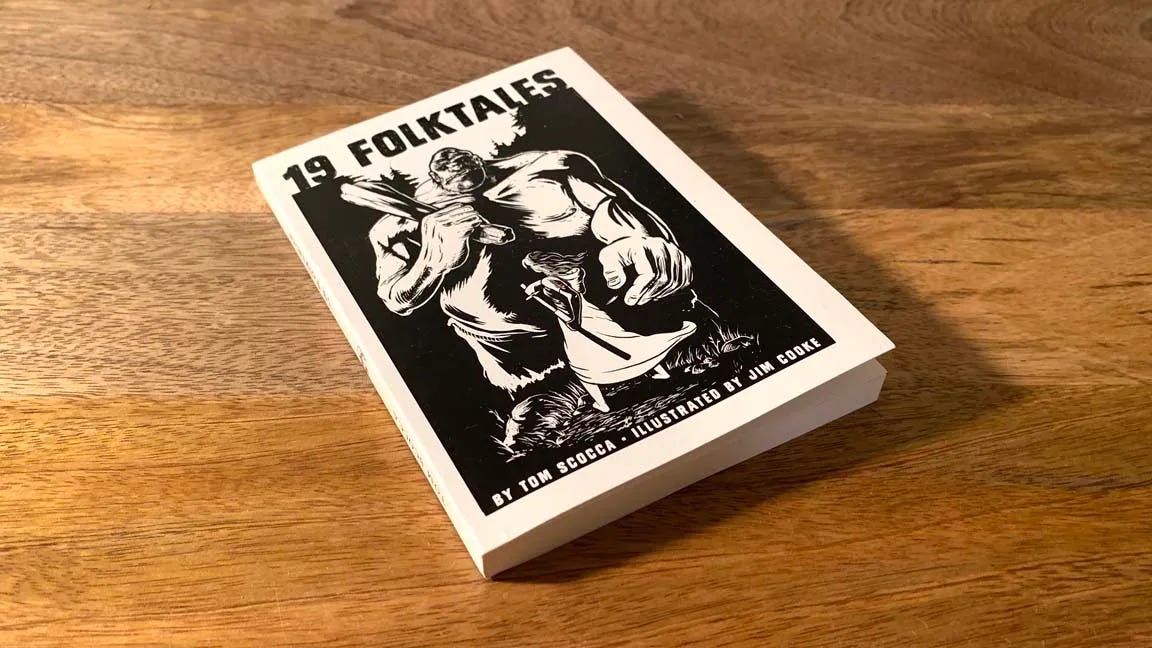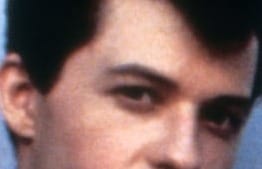How much can one headline weigh?
Indignity Vol. 4, No. 102

DOING HOMEWORK WITH DUCKIE DEP'T.

The Quest for the Brat Pack
THERE'S A NEW—within certain marketing segments, unavoidable—documentary out about the Brat Pack, which was the name of a phenomenon or idea that took hold in the mid-1980s around a set of young movie stars. The filmmaker of the movie, Brats, is Andrew McCarthy, who was a young movie star in the mid-1980s. Probably if you've kept reading even this far, you don't really need me to tell you who Andrew McCarthy is, or was: the tense but wry one, fair but not quite blond, Kevin in St. Elmo's Fire and Blane in Pretty in Pink.
The movie records the journeys of McCarthy—around age 60 during the filming, still tense and still wry under shaggy gray hair—as he goes around meeting up with his long-ago fellow movie stars, or the ones of them he can reach, and with other witnesses and experts (and also Malcolm Gladwell), to try to ask them about exactly what happened when the Brat Pack concept crashed into their barely formed lives and careers. He is haunted by the effects of the "Brat Pack" label, coined in the headline of a 1985 New York magazine cover story, and so are most of the others. The public perception of the Brat Pack, they feel, became a harsh limit on what had seemed like the boundless possibilities of Hollywood glory.
New York magazine did its part in the Brats publicity cycle by posting a clean online version of the original story, written by then-29-year-old David Blum, along with a new essay by Blum defending his work. Here is the part of the article, which was called "Hollywood's Brat Pack," that discusses Andrew McCarthy:
And of Andrew McCarthy, one of the New York–based actors in St. Elmo’s Fire, a co-star says, “He plays all his roles with too much of the same intensity. I don’t think he’ll make it.” The Brat Packers save their praise for themselves.
That's it. That's the only thing the article said about him. Andrew McCarthy has been struggling for nearly 40 years with the perceived and actual effects of a story in which he barely figured in the text—in which, if anything, he was treated as a marginal, out-of-town member of the Brat Pack. His Pretty in Pink costar, Molly Ringwald, who was clearly wounded by the Brat Pack name in the archival clips from the time and who wouldn't participate in McCarthy's documentary, wasn't mentioned in Blum's article at all. None of the woman actors were.
Late in the documentary, McCarthy sits down to talk to Blum in the writer's apartment. Blum is unapologetic, even with McCarthy's once professionally wounded and seething eyes pointed at him, but his lack of remorse is essentially generic, the standard posture of a journalist who wrote a wildly successful story that made the subjects of it mad. He stands up for himself in principle, in a defensive stance preserved for decades; he certainly doesn't try to tell McCarthy that the story wasn't even about him.
But it wasn't! A bunch of it was about Tom Cruise—"the biggest Brat of all"—who is nobody's idea of a Brat Packer. Also Matt Dillon and Sean Penn and...Nicolas Cage? The story paid more attention to Harry Dean Stanton, "a grizzled 58-year-old character actor" who was the "spiritual father of the Brat Pack" than it did to McCarthy; that is to say, it focused not on Molly Ringwald but on the old guy who was about to play her dad in Pretty in Pink.
On examination, then, the article that created the Brat Pack couldn't decide what the Brat Pack was. For the purposes of the piece, the term was shorthand simultaneously for the set of young male actors trying to become bankable Hollywood leading men circa 1985 and for the set of guys who were hanging out and partying with Emilio Estevez. Originally, Blum was just supposed to be writing an Estevez profile, in advance of St. Elmo's Fire, but to the extent that those sets of actors and of party boys also overlapped in the persons of Rob Lowe and Judd Nelson, the scenes around Estevez could potentially, with the right angle and especially the right headline, sort of stand for something larger.
Given all the distress it caused, the story is not especially mean, line by line. If Blum was on a dirt-digging expedition in Young Hollywood, it was one that ended up producing the sentence "Rob Lowe went back home to his girlfriend, waiting for him in Malibu." There was a moment of Judd Nelson being arrogant toward some fans, and a scene where Estevez was trying to scheme his way into a movie for free (which made him seem not so much entitled as hapless at an art my small-town teen friends had mastered).
The harshest things in the story were a few petty blind quotes like the one about McCarthy; a mid-article listicle section ranking or classifying the actors, which put Nelson down as "The Overrated One"; and a passage about how most of these actors hadn't gotten the kind of formal education and training in the craft of acting that Marlon Brando or Robert De Niro had. The latter two read like the kinds of things an editor might have asked for, if not written into the copy directly, to try to give a piece in which Rob Lowe goes home to his girlfriend a little more zing or authority.
But the Zeitgeist doesn't read magazine stories, exactly. It takes up an idea about them. "Radical Chic" wasn't really Tom Wolfe's scathing takedown of Leonard Bernstein's soiree for the Black Panthers; it was a much more interesting story of how Charlotte Curtis of the New York Times wrote a scathing takedown of the party, and how liberal New York disciplined itself in the aftermath. Nevertheless, everyone remembers—knows—it was Wolfe who blew up Lenny and the Panthers.
So something came to be under the Brat Pack name, without much reference to the contents of the story that coined the name. Wikipedia proposes, with a flurry of citations, that a basic working definition of the Brat Pack is the combined casts of The Breakfast Club and St. Elmo's Fire, although it then notes that people tend to leave out Mare Winningham, despite her having been in St. Elmo's Fire. And Anthony Michael Hall, on the Wikipedia list for his Breakfast Club role, is only a passing face in Brats—he was not, after all, in any movies with Andrew McCarthy. Nor was Hall quite the kind of romantic lead or co-lead who the public might have wanted to see taken down a notch, if that was what the public wanted from the whole Brat Pack business.
Was it? Was there something about being included in the Brat Pack that was worse than just fame itself? McCarthy visits Ally Sheedy, in a nice unglamorous apartment, and she seems to be more or less how one would expect Ally Sheedy to be—a little resigned, a little amused, a little traumatized, the same way Ally Sheedy came across before the Brat Pack had ever been named. Demi Moore sits serenely outside her temple of a house, nearly levitating with wisdom and security in a way that testifies to the power of huge amounts of money and huge amounts of therapy. Emilio Estevez, bright-eyed and a little shiny, standing up in his kitchen, confesses to avoiding a chance to work with McCarthy after the story came out because he wanted to avoid the label. Timothy Hutton, who was in the magazine story but not in any of the relevant movies, has 60,000 bees.
Quite a few of these people have been through rehab. A TV clip of McCarthy trying desperately to maintain, next to an extremely unbothered James Spader, gets at a bit of that, as does Moore talking about how director Joel Schumacher supplied a round-the-clock sobriety monitor to get her through the St. Elmo's Fire shooting. None of this particularly depended on a magazine headline.
McCarthy's conversations do make it clear that these people bore the weight of being social and romantic archetypes for millions of people—of having their personas, or identities, appraised and consumed and assimilated. Molly Ringwald was genuinely 15 years old when she filmed Sixteen Candles! How could a person not flinch at the word "brat" under the circumstances?
Unarticulated among the lines of analysis or explanation in the documentary is the fact that the youth movies of the 1980s were the first major demonstration that the baby boomers were not America's young people anymore. Stories about teen life and romance belonged to younger actors and audiences. Not surprisingly, the boomers took this with the same grace they took everything else that threatened to displace them from their position of eternal freshness at the center of the universe.
Also, still, though, it was show business. McCarthy checks in with Jon Cryer, who tells the camera he's not part of the Brat Pack, and who is certainly right about that. It's hard to say how and why anyone in particular dodged the category—John Cusack's filmography, for instance, reads like Mister Magoo walking through an active construction site, taking the right kind of roles at the wrong time and the wrong kind of roles at the right time—but the simplest explanation in Cryer's case is that his chance to be a leading man was undermined by something else entirely.

Specifically, the reason Jon Cryer was no threat to become another Rob Lowe or Emilio Estevez was that after he'd finished shooting Pretty in Pink, Paramount forced the producer, John Hughes, and director, Howard Deutch, to redo the ending, so that Cryer's goofball character, Duckie, would no longer end up with Molly Ringwald. The documentary recounts all of this—Deutch and McCarthy recall the terrible wig he had to wear in the reshoot, after shaving his head for a Broadway role—but without really dwelling on what it meant for Cryer.
Test audiences hated seeing a faithful weirdo like Duckie get the girl. They wanted her to go with her brooding, upper-class suitor, McCarthy as Blane. The stereotype had a logic that couldn't be ignored.

EASY LISTENING DEP'T.
CLICK ON THIS box to find the Indignity Morning Podcast:


SANDWICH RECIPES DEP'T.
WE PRESENT INSTRUCTIONS in aid of the assembly of a sandwich—serve before the soup—selected from Mrs. Ericsson Hammond's Salad Appetizer Cook Book, by Maria Matilda Ericsson Hammond. Published in 1924, and now in the Public Domain and available at archive.org for the delectation of all.
Shrimp Sandwich a la Quist
Sandwich de Crevettes a la Quist
For eight sandwiches take sixteen slices of bread, a half cup of butter, a pound of cooked shrimps, one teaspoonful of anchovy paste, three tablespoonfuls of caviar, cayenne pepper, and salt.
How to Make It. Cut the bread out with a medium biscuit cutter; spread them with butter that has been mixed with the anchovy paste; chop part of the shrimps and mix it with the butter; spread this a quarter inch of thickness on top of the sandwiches, and on top of that put the other bread with the buttered side up. Peel even-sized shrimps [if they are too large split them in halves lengthwise], put them on a broiler and glaze with the chaudfroid sauce. Supply two shrimps for each sandwich; put them on top of the sandwiches meeting, and all around decorate a ribbon of stirred butter through a fancy tube, and in the center fill with caviar. Decorate the shrimps with a narrow thread of the sauce that has been colored with butter coloring. Arrange them in the form of a ring on a platter with parsley in the center and garnish with lemon and unpeeled shrimps all around. Serve before the soup.
If you decide to prepare and attempt to enjoy a sandwich inspired by this offering, be sure to send a picture to indignity@indignity.net.

MARKETING DEP'T.

Supplies are really and truly running low of the second printing of 19 FOLK TALES, still available for gift-giving and personal perusal! Sit in the gathering heat with a breezy collection of stories, each of which is concise enough to read before the thunderstorms start.

HMM WEEKLY MINI-ZINE, Subject: GAME SHOW, Joe MacLeod’s account of his Total Experience of a Journey Into Television, expanded from the original published account found here at Hmm Daily. The special MINI ZINE features other viewpoints related to an appearance on, at, and inside the teevee game show Who Wants to Be A Millionaire, available for purchase at SHOPULA.







